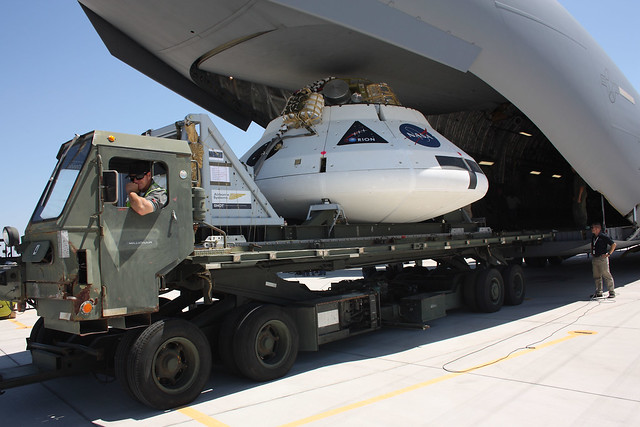
This 2010 article introduced techniques not previously used in test safety planning. The author applied the techniques for C-17A aerial delivery flight testing on NASA projects Orion crew entry vehicle parachute assembly system (CPAS) and the Ares jumbo drop test vehicle (JDTV). This paper included a description of the test build-up and the results of recent airdrop testing (circa 2010). In addition, the paper presented proposed envelope expansion of the aerial delivery capability, including test challenges and safety planning. Of particular note is a description of the modeling and simulation used to support test readiness and contingency planning. Approved for public release; distribution is unlimited: AFFTC-PA №10150.
Introduction
In July 2008, NASA and the Air Force Flight Test Center (AFFTC) began airdrop flight testing of the Orion crew entry vehicle parachute assembly system (CPAS)and the Ares jumbo drop test vehicle (JDTV) in order to prove the design of the parachute recovery systems of both of these space vehicles. For the C-17A, the planned culmination of these tests was a high-altitude airdrop of a 90,000-pound JDTV. This represented an envelope expansion solely for flight-test purposes of 50 percent greater than the current operational airdrop envelope. The following material is a brief summary of this testing, focusing on the test build-up and the modeling and simulation used for safety planning, risk mitigation, and pilot preparation.
Read the full article on medium.